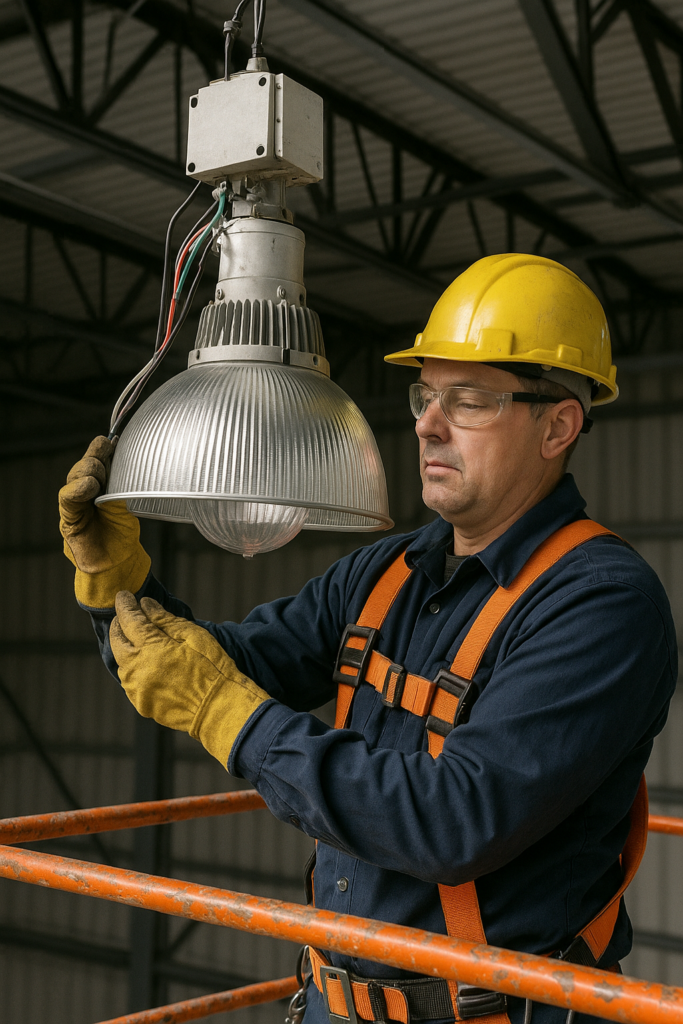Installing lighting in high or hard-to-reach spaces is never a routine task. These projects demand advanced planning, awareness of potential dangers, and the strict execution of safety protocols. Whether you’re handling routine maintenance or a festive holiday lighting installation, understanding the fundamental safety procedures can help prevent accidents and protect everyone involved.
The combination of height, electricity, and challenging working angles greatly increases the risk of injuries. Hazards such as falling, electrical shocks, and dropped tools endanger workers and can lead to extensive property damage. Preparation and adherence to best practices are the key to safe installations.
Making safety a priority safeguards lives and helps ensure the installation’s longevity. Poorly installed lighting can result in failures and costly repairs down the road. By approaching each project with a safety-first mindset, you help guarantee that every installation is professional and secure. Experts recommend regularly reassessing safety protocols and training all personnel involved in high-elevation lighting tasks.
Table of Contents
- 1 Conduct a Thorough Risk Assessment
- 2 Use Appropriate Personal Protective Equipment (PPE)
- 3 Ensure Ladder and Scaffolding Safety
- 4 De-energize Electrical Circuits
- 5 Utilize Proper Tools and Equipment
- 6 Secure Fixtures and Wiring
- 7 Adhere to Local Building Codes and Regulations
- 8 Consider Professional Assistance
Conduct a Thorough Risk Assessment
Understanding the risks in your work environment is the first line of defense against accidents. Survey the site and note uneven surfaces, tight spaces, or fragile structures, as these factors can influence your approach. Check for overhead hazards such as pipes or beams, and examine the strength and durability of potential mounting points. Ensure all electrical sources and wiring are modern, well-marked, and easily accessible for shutoff.
Use Appropriate Personal Protective Equipment (PPE)
Personal protective equipment directly reduces the severity of workplace accidents. Installers tackling high or awkward lighting setups should use:
- Insulated gloves for safe electrical work
- Protective goggles to block dust and debris
- Hard hats to shield from falling objects
- Non-slip shoes to improve traction on ladders or platforms
Outfitting yourself with the proper PPE isn’t just about compliance; it’s about dramatically lowering the risk of injury. According to experts at NIOSH, PPE forms a vital layer in comprehensive fall protection strategies.

Ensure Ladder and Scaffolding Safety
Most incidents involving elevated lighting are related to unstable positions or falls. Always choose the correct ladder for the job and inspect it for defects before use. Set it on solid, level ground and maintain three contact points while climbing. Projects extending over a long period or at greater heights should use industrial scaffolding equipped with guardrails, toe boards, and stable walkways. Never attempt to stretch or reach too far—move the ladder or scaffolding as needed for safe access.
De-energize Electrical Circuits
Before working on any electric connections, turn off the main circuit or breaker. Before handling any exposed wires or hardware, confirm that the wires are not live using a voltage tester. This precaution is essential for preventing electrical shock and accidental short circuits that can cause fire or injury. Safe lockout/tagout procedures are a must, even in residential settings.
Utilize Proper Tools and Equipment
Using the right tools makes installation smoother and contributes to accident prevention. Use insulated hand tools and non-conductive ladders, especially near power lines or exposed wiring. A proper voltage tester is critical for verifying dead circuits. Choose anchors and fasteners that match each lighting fixture’s weight and surface type.
Secure Fixtures and Wiring
Effective lighting installation means that nothing is left loose or exposed. Mount each light fixture with appropriate brackets or anchors, and double-check that all screws and fasteners are tight. Wires should be protected from potential damage—use cable clips or conduit as necessary to eliminate strain or sagging. Ensuring everything is secure minimizes the risk of fallen objects and damaged wiring in the future.
Adhere to Local Building Codes and Regulations
Every locality has specific codes for electrical work and installations at height. These rules help maintain uniform standards for safety and durability. Installers should familiarize themselves with local and national electrical codes and secure necessary permits where required. Adhering to these standards is essential for insurance coverage and to avoid expensive retrofits or legal liabilities.
Consider Professional Assistance
Consider employing a licensed professional for lighting projects involving particularly high ceilings, hard-to-access exterior areas, or intricate wiring. Electricians and specialized installers are trained in the latest safety techniques and carry insurance for complex jobs. Their expertise can be invaluable, especially for installations pushing standard safety protocols’ limits.
By making these best practices routine, every lighting installation—whether seasonal décor or permanent fixtures—remains safe and enduring.


